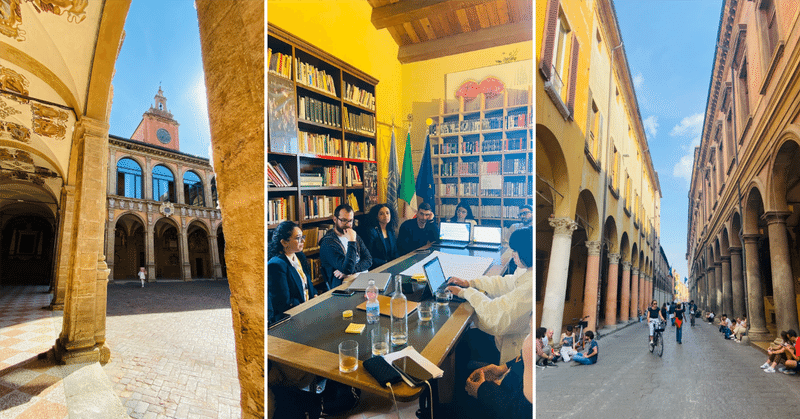
オーラル・ヒストリー×デジタル。日系アメリカ人の戦時中の投獄経験に関するオーラルヒストリーを記録、展示する「Densho」の事例 「Densho: The Japanese American Legacy Project」by Tom Ikeda(#論文研究)
論文情報
Title:Densho: The Japanese American Legacy Project
Author(s): Tom Ikeda
Source: Douglas A. Boyd, Mary A. Larson (eds.) Oral History and Digital Humanities: Voice, Access, and Engagement
Year:2014
URL:
レビュー
テーマ
オーラル・ヒストリー×デジタル。日系アメリカ人の戦時中の投獄経験に関するオーラルヒストリーを記録、展示する「Densho」の事例
著者
Tom Ikeda
Product Group General Manager at Microsoft -> Founder of Densho
Densho:
a Seattle-based organization which has produced a website as an important source of learning and teaching about the World War II incarceration of 120,000 Japanese Americans.
学術的位置づけ
デジタル×ヒューマニティ、特にオーラルヒストリーの分野における実践例
スコープ
This chapter examines some of the steps that led to the methods and tools used by the project to collect, preserve, and share its materials, along with examples of how people have used Densho’s online resources.
内容要約
<Origins>
日系アメリカ人が集まり、日系アメリカ人に対する対戦中の不当な投獄について議論
A group of 20 Seattle-area volunteers, almost all Japanese Americans, met to discuss the history.
Discussion from simply conducting and preserving oral history interviews to a much broader discussion of how the stories could be used to promote and advance the country’s democracy
<Starting the Densho Interview Program>
1996年はインタビュー準備期間
対象となるインタビューイーのグループを見つける
ゴールはできるだけ多様な人々の話を聞くこと、それもこれまで話されてこなかったeveryday stories or “stories less told”を聞くこと
Densho spent most of 1996 researching, planning, and training for its interview program.
The initial scope of the interview program was to identify and recruit a diverse group of Japanese Americans who were incarcerated during World War II and who currently lived in the greater Seattle area.
the goal of Densho should be to create a collection with as many perspectives as possible
life-course trajectoryモデルを使った
;戦争の前後でどのように人生が変わったか
Densho adopted a life-course trajectory model for its interviews,
how lives and life-course trajectories changed during the war and after.
インタビューはビデオに記録することにした
;人が話す姿を見る感情的インパクトと、将来ビデオ需要が高まることを見越して
Densho decided to video-record the interviews based on two factors—the emotional impact of seeing people share their stories, and the future scenario when on-demand video would be common and expected.
全てのインタビューを文字起こしすることにした
;インタビューイーがレビューしやすく、情報の正確性と価値が増すため
Densho decided to transcribe all of its interviews because transcriptions gave narrators an opportunity to more easily review and correct the information in the interview, which would increase its accuracy and value.
<Creating a Prototype for the Video Interview Collection>
1998年〜プロトタイプ実施
インデックスを作ったり、デザインの変化を加えながら、ユーザー・エクスペリエンスを研究
<Bringing the Oral History Collection to the Web>
2000年にインタビュー記録をウェブで公開
In 2000, Densho started the process of bringing the oral history collection to the web in a way that the online collection could grow and connect with other primary source materials
<Use in Teaching and Research>
ウェブサイト公開後は、教育の場でも使われるようになった
When the website was launched it became a favorite with instructors who teach the Japanese American incarceration story
<Next Steps>
ユーザーが記録をシェアしたり、これを使って研究したりすることを推奨
技術は変化するので、それをマネジメントできる人材が必要
The next evolution of the Densho online interviews is to encourage storytelling by its viewers.
Densho wants users to share and explain interesting stories from the Densho visual history collection on social media platforms like Facebook. Densho also hopes that people will construct their own interpretations utilizing the online video collection
organization needs personnel in place who are able to plan and prepare for the inevitable changes.
意見
筆者の主張について
参考になる先進事例
マイクロソフトというバックグランド=プロダクト技術周りのスキル、様々な人の巻き込みを見習いたい
「社会性」→巻き込み
メソドロジーについて
研究余地について
メモ
興味、今後調べたいこと
思い・感想
かなり時間をかけた大掛かりなプロジェクト、自分がどれくらいの規模を作りたいか、博士課程の3年間を見据えていたので、どのくらいのスコープになるか、こういった人たちと話す必要があるのかもしれない
大義名分をどう置いて、どこのリソースが必要か
→まずは、自分がどういったものを作りたいか
とにかく、文章の書き方が素晴らしくクリアで分かりやすい。素晴らしい。
この記事が気に入ったらサポートをしてみませんか?
